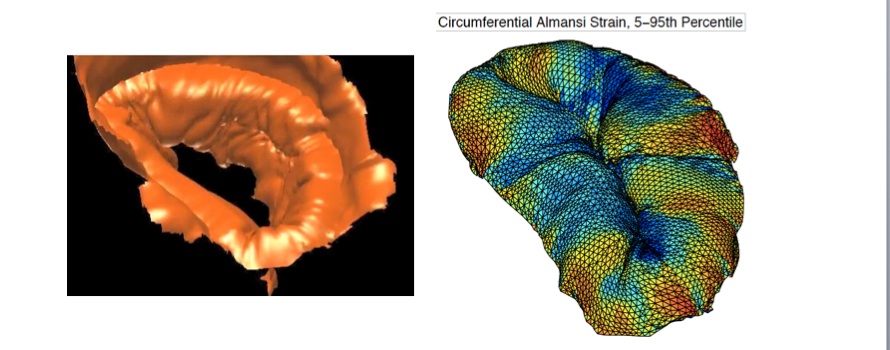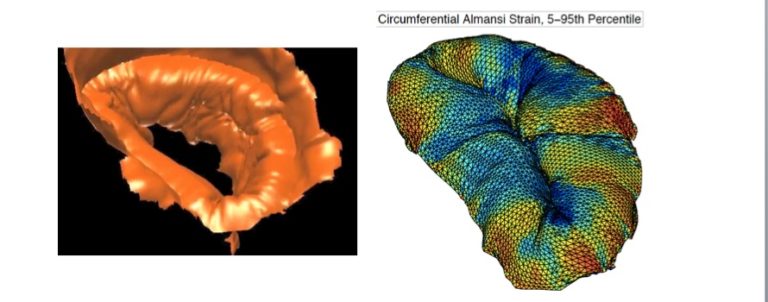Volume: 60, Issue: 11, Page: 3238 – 3247
C. Sprouse, R. Mukherjee, P. Burlina

This study is concerned with the development of patient-specific simulations of the mitral valve that use personalized anatomical models derived from 3D Transesophageal Echocardiography (3D TEE). The proposed method predicts the closed configuration of the mitral valve by solving for an equilibrium solution that balances various forces including blood pressure, tissue collision, valve tethering, and tissue elasticity. The model also incorporates realistic hyperelastic and anisotropic properties for the valve leaflets.
This work is aimed at developing a capability that would help provide surgeons with critical preoperative personalized assessment information, allowing them to evaluate the potential benefits of various surgical interventions through the examination of patient-specific simulated leaflet coaptation and resultant stresses.
This study compares hyperelastic tissue laws with a quasi-elastic law under various physiological parameters, and provides insights into error sensitivity to chordal placement, allowing for a preliminary comparison of the influence of the two factors (chords and models) on error. Predictive errors show the promise of the method, yielding aggregate median errors on the order of 1 mm, and computed strains and stresses show good correspondence with those reported in prior studies.

